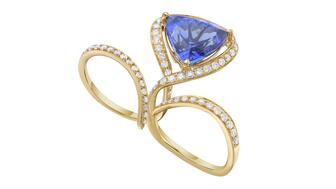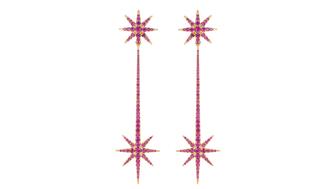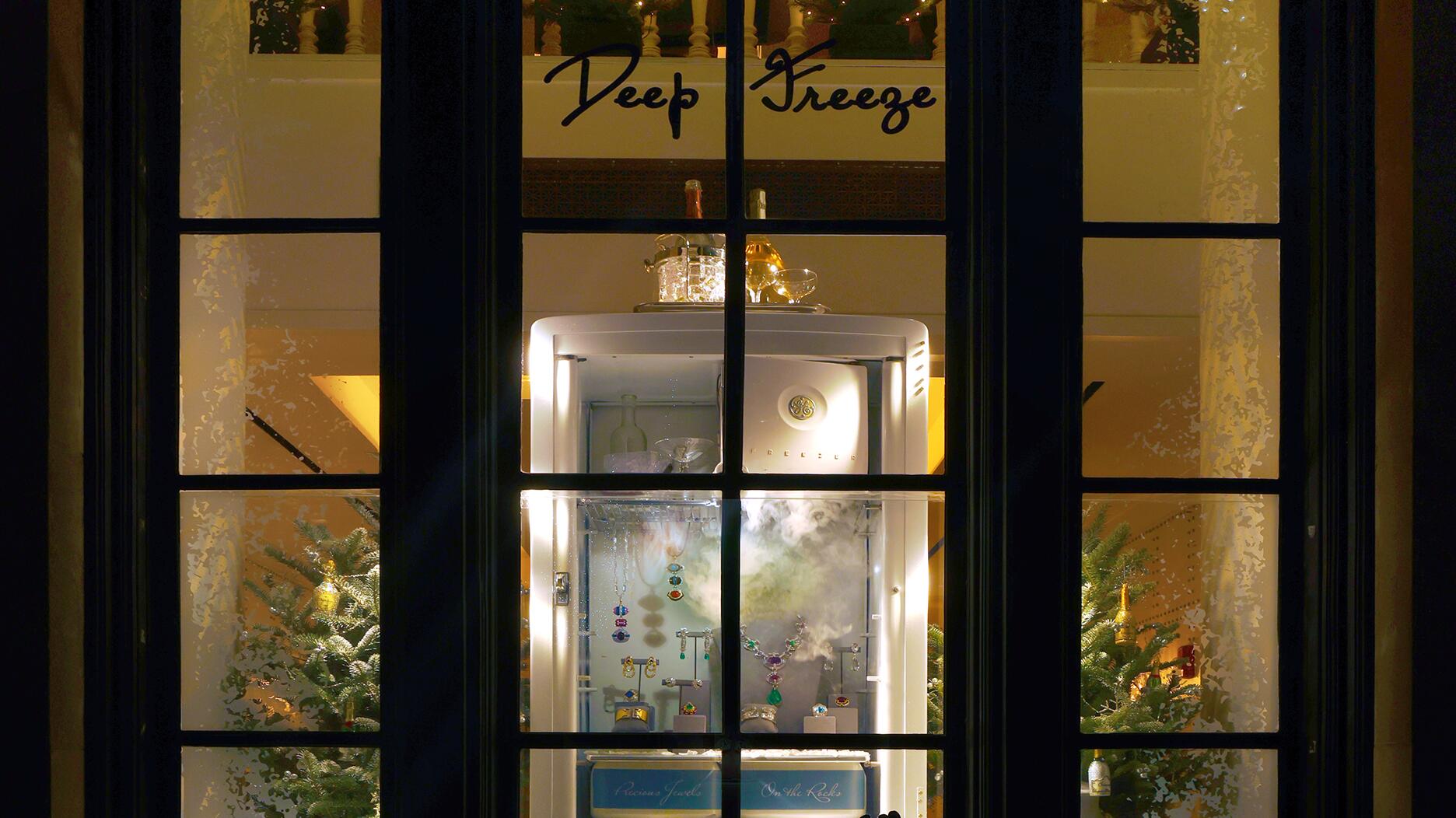Carlos Jose Hernandez and Joshua Zuazo were sentenced to life without the possibility of parole in the 2024 murder of Hussein “Sam” Murray.
Global Luxury Goods Market Settles into ‘New Normal’
Bain & Co. said spending on global luxury goods grew 4-6 percent last year and it forecasts the same for 2019.
Milan—The global personal luxury goods market has reached a “new normal” pattern of growth after strong performances in both 2017 and 2018, according to Bain & Co.
In its recently released “Bain Luxury Goods Worldwide Market Study, Spring 2019,” the management consulting firm reported that the market grew 6 percent year-over-year in 2018 to approximately $293.63 billion in sales.
An acceleration in domestic spending from mainland China consumers and an increase in European tourism drove the growth, though the report also noted that moderate growth is being seen in most markets.
Bain expects sales to remain steady in 2019—4 to 6 percent growth (at constant exchange rates), with sales totaling between $306.07 and $311.71 billion.
In the Americas, the U.S. luxury market was “tepid, with mild growth” throughout 2018.
The new tax reform plan created some uncertainties for consumers and negatively impacted domestic spending on personal luxury goods, Bain said, while malls and department stores continued to struggle with decreasing foot traffic.
Mono-brand stores in the region, meanwhile, maintained a positive growth trend.
Bain & Co. is forecasting 2 to 4 percent growth in the Americas this year, with a rise in domestic consumption in full-price stores but fewer Chinese tourists.
Meanwhile, despite socio-political turmoil in the U.K. and France, Europe also saw positive growth last year due to an influx of tourism spurred by the Euro’s weakening against all major currencies.
Ongoing turmoil in the region, as well as a weakening macro-economic outlook, continue to pose a threat to luxury goods spending, with a modest 1 to 3 percent growth forecast for 2019.
Mainland China continues to reign as a dominant market for luxury goods, as local consumers show a strong preference for purchasing in the domestic market; price harmonization, consumer-centered marketing strategies and government initiatives are all to thank for this trend.
“Solid” consumer confidence and a willingness to spend, especially when it comes to the younger generations, are expected to drive year-over-year-growth of 18 to 20 percent in mainland China in 2019.
Japan is still an “exclusive and attractive” market for luxury brands, Bain said, with forecasted growth of 2 to 4 percent in 2019 and tourist spending expected to rise ahead of the Tokyo 2020 Olympics next summer.
The remaining Asian regions also have a positive outlook, Bain added—apart from Hong Kong and Macau, which continue to lose ground to mainland China—and is expected to
A growing middle class with increasing disposable incomes is propelling Indonesia, the Philippines and Vietnam, while sustained growth in South Korea comes from local consumers and a slight tourism rebound.
Meanwhile, the luxury markets across the rest of the world are expected to be flat or see a slight decrease in 2019, with the Middle East remaining stagnant as consumer spending moves away from the domestic market.
Macro Trends in Luxury
In its report, Bain also identified five trends that likely will shape the next generation of luxury for the long term.
1. A new generation
Bain said the Chinese Gen Z demographic is “the segment to watch”—they’ll have significant spending power as “proud and empowered impulse buyers.”
2. Post-ownership
Bain said it anticipates a paradigm shift in consumption that will favor access over ownership; think: the sharing economy, rentals and the second-hand market.
3. Afterlife
Sustainability and social responsibility will be the focus, based on ideals centered on the environment, human labor and animal welfare.
4. Beyond physical
Digital will disrupt the entire luxury value chain and put the focus on luxury experiences over products.
5. Above volume/price
Customer networks will be the new measure of value.
“It’s important to highlight the role that insurgent brands will play in the luxury sector,” said Federica Levato, a partner with Bain and co-author of the study. “They will challenge established brands, pushing for a real paradigm shift with a more creative approach that goes beyond the product itself and impacts all facets of business, ultimately creating a more direct and continuous dialogue with consumers.”
The Latest

Yood will serve alongside Eduard Stefanescu, the sustainability manager for C.Hafner, a precious metals refiner in Germany.

The New Orleans jeweler is also hosting pop-up jewelry boutiques in New York City and Dallas.

How Jewelers of America’s 20 Under 40 are leading to ensure a brighter future for the jewelry industry.

Set in a Tiffany & Co. necklace, it sold for $4.2 million, the highest price and price per carat paid for a Paraíba tourmaline at auction.


Take luxury gifting to new heights this holiday season with the jeweler’s showstopping 12-carat sphene ring.

This year's theme is “Unveiling the Depths of the Ocean.”

Roseco’s 704-page catalog showcases new lab-grown diamonds, findings, tools & more—available in print or interactive digital editions.

In its annual report, Pinterest noted an increase in searches for brooches, heirloom jewelry, and ‘80s luxury.

Starting Jan. 1, customers can request the service for opal, peridot, and demantoid garnet.

The 111-year-old retailer celebrated the opening of its new location in Salem, New Hampshire, which is its third store in the state.

The filmmaker’s personal F.P. Journe “FFC” prototype was the star of Phillips’ recent record-setting watch auction in New York.

The new location in the Design District pays homage to Miami’s Art Deco heritage and its connection to the ocean.

Inflations, tariffs, and politics—including the government shutdown—were among consumers’ top concerns last month.

“Longtime favorite” presenters, as well as first-time speakers, will lead talks and workshops at the annual event in Tucson next year.

Silas Smith of Meridian Metalworks won the challenge with his pendant that blends Australian and American landscapes.

The sale of the 31.68-carat, sunset-hued stone was part of Sotheby’s first series of events and auctions in Abu Dhabi.

Most customers who walk into your store this month have made up their minds. Your job is to validate their choice, Emmanuel Raheb writes.

The collection features characters and motifs from Ukrainian folklore, including an enchanted mirror and a magic egg.

MatrixGold 3.11, the newest version of the jewelry design program, offers more flexibility, precision, and creative control.

The pavilion will be part of the 2026 JA New York Spring show, scheduled for March 15 to 17.

Kadet, a 1994 National Jeweler Retailer Hall of Fame inductee, helped grow the family-owned retailer in the Chicago area and beyond.

Billed as the world’s smallest wearable, Lumia Health’s new smart earrings have a health tracker subtly embedded in the back.

Don’t let those with December birthdays feel blue. Help them celebrate their month with blue zircon, turquoise, and tanzanite.

The new pink sapphire version of the piece dances with its wearer in the brand’s “Icons After Dark” holiday campaign.

A choice that’s generated a lot of commentary, Pantone says “Cloud Dancer” marks a fresh start and encourages relaxation and creativity.

The manufacturer’s holiday campaign features a gift guide filled with trending designs and jewelry that can be personalized.



























